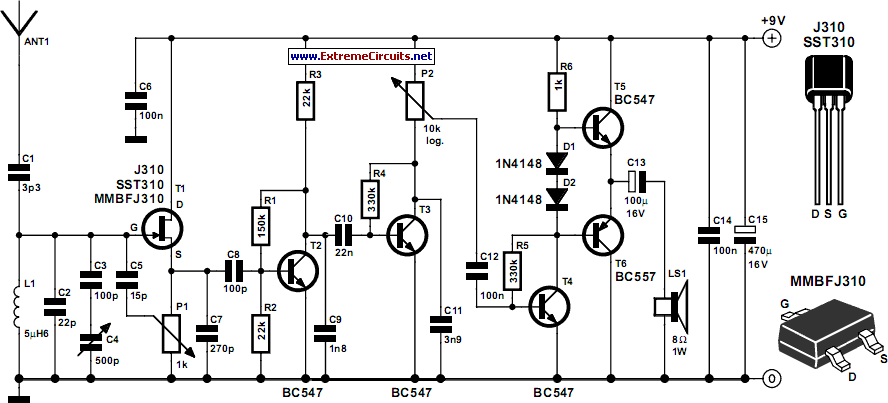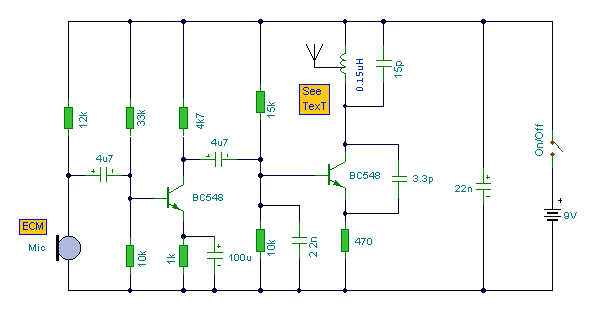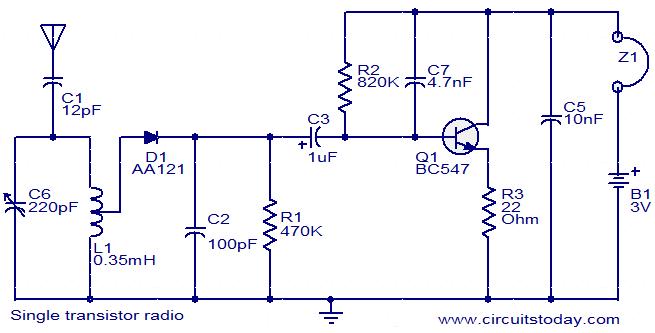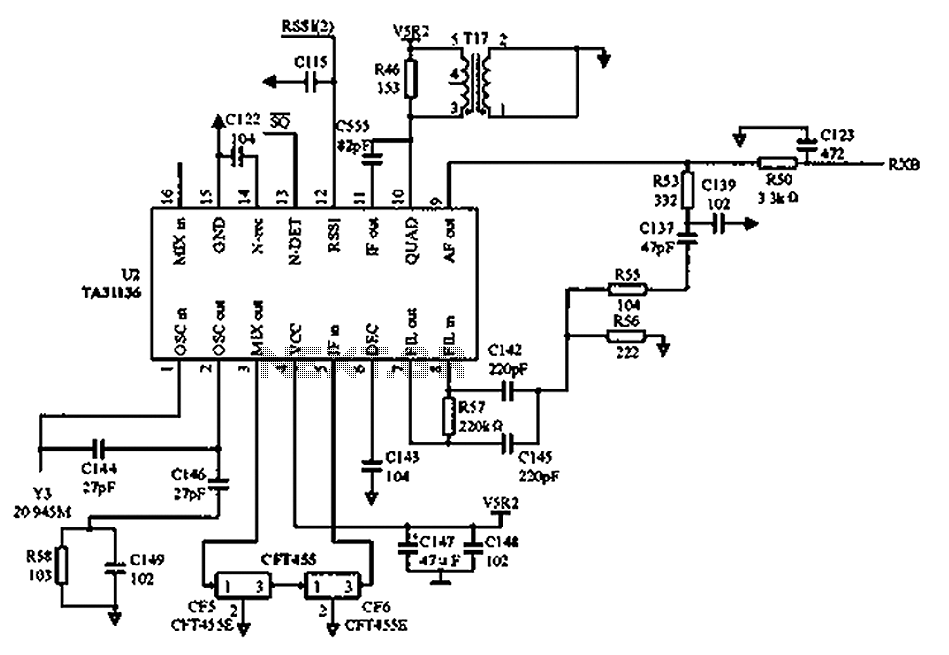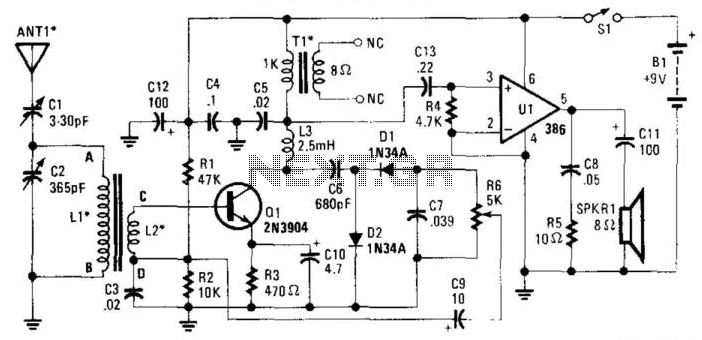
8MHz AM radio transmitter
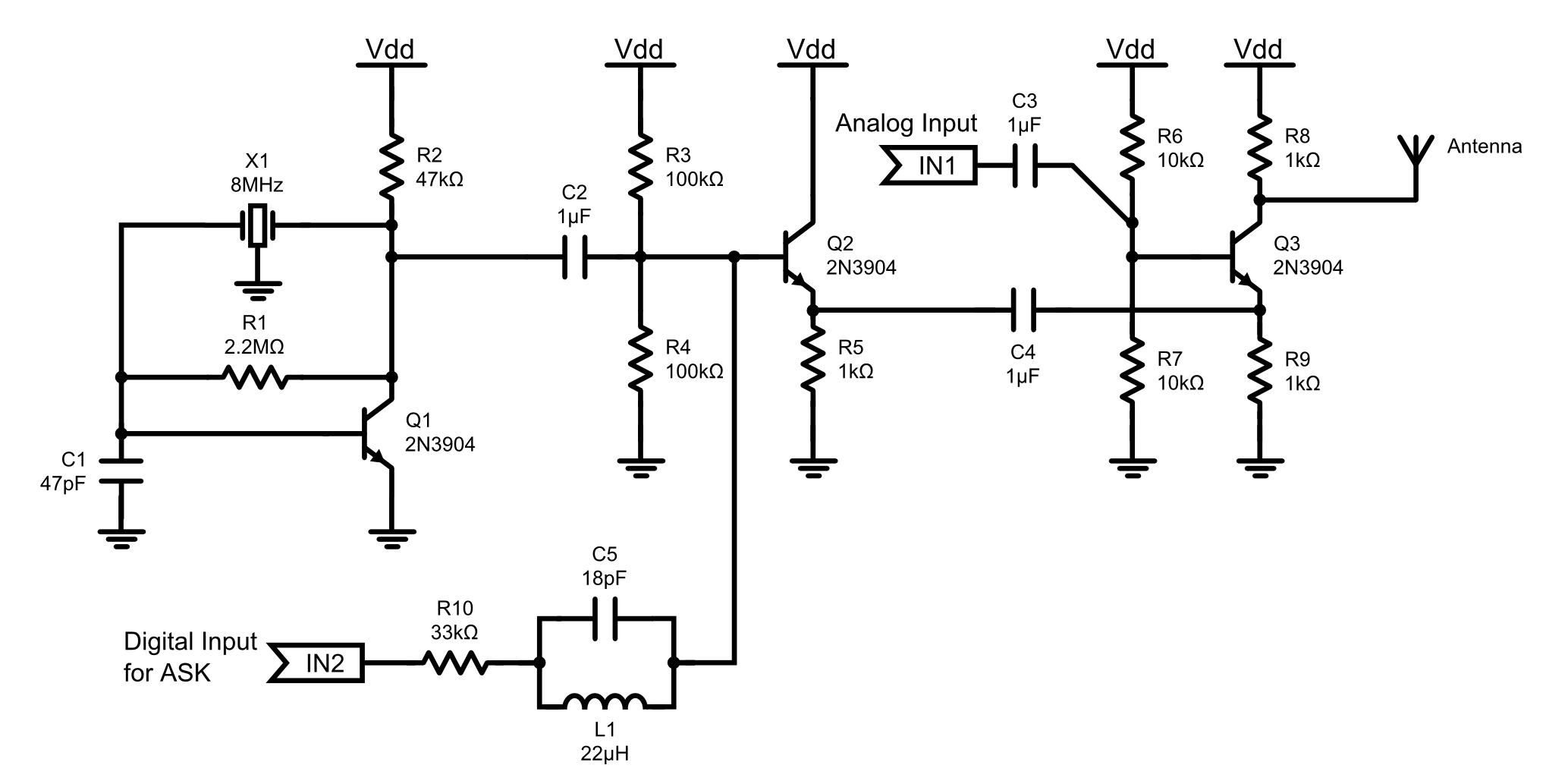
This is an 8MHz amplitude modulated (AM) radio transmitter designed primarily for work purposes and as an exercise in electronics. It serves as a simple radio transceiver that may be utilized for various future projects.
The 8MHz AM radio transmitter operates by modulating the amplitude of a carrier wave at a frequency of 8 MHz. The transmitter circuit typically includes several key components: an oscillator, a modulator, an amplifier, and an antenna.
The oscillator generates a stable 8 MHz signal using a crystal or LC circuit, ensuring that the carrier frequency remains consistent. The modulator combines the audio input signal—often originating from a microphone or audio source—with the carrier wave. This process alters the amplitude of the carrier signal in accordance with the audio input, effectively encoding the sound information onto the radio wave.
The amplified output is then fed to the antenna, which radiates the modulated signal into the surrounding environment. The design may incorporate a low-pass filter to eliminate unwanted harmonics and improve the quality of the transmitted signal.
To ensure proper operation, power supply considerations are essential, typically involving a regulated DC source that provides the necessary voltage and current to the circuit. Additionally, components such as resistors, capacitors, and inductors may be included to stabilize the circuit and optimize performance.
This AM transmitter can be utilized for various applications, such as short-range communication, educational projects, or hobbyist experimentation, making it a versatile tool for electronics enthusiasts. Proper tuning and testing are crucial to achieving the desired transmission range and audio clarity.This is an 8MHz amplitude modulated (AM) radio transmitter, which I built mainly for work, and also as an exercise in electronics (it is the first RF transmitter I`ve ever built). We wanted to have a simple radio transceiver design at our disposal for some possible projects in the future that might require.
🔗 External reference
The 8MHz AM radio transmitter operates by modulating the amplitude of a carrier wave at a frequency of 8 MHz. The transmitter circuit typically includes several key components: an oscillator, a modulator, an amplifier, and an antenna.
The oscillator generates a stable 8 MHz signal using a crystal or LC circuit, ensuring that the carrier frequency remains consistent. The modulator combines the audio input signal—often originating from a microphone or audio source—with the carrier wave. This process alters the amplitude of the carrier signal in accordance with the audio input, effectively encoding the sound information onto the radio wave.
The amplified output is then fed to the antenna, which radiates the modulated signal into the surrounding environment. The design may incorporate a low-pass filter to eliminate unwanted harmonics and improve the quality of the transmitted signal.
To ensure proper operation, power supply considerations are essential, typically involving a regulated DC source that provides the necessary voltage and current to the circuit. Additionally, components such as resistors, capacitors, and inductors may be included to stabilize the circuit and optimize performance.
This AM transmitter can be utilized for various applications, such as short-range communication, educational projects, or hobbyist experimentation, making it a versatile tool for electronics enthusiasts. Proper tuning and testing are crucial to achieving the desired transmission range and audio clarity.This is an 8MHz amplitude modulated (AM) radio transmitter, which I built mainly for work, and also as an exercise in electronics (it is the first RF transmitter I`ve ever built). We wanted to have a simple radio transceiver design at our disposal for some possible projects in the future that might require.
🔗 External reference
